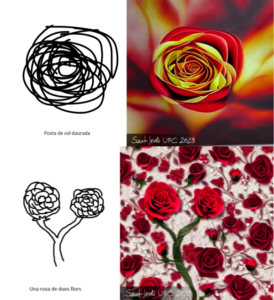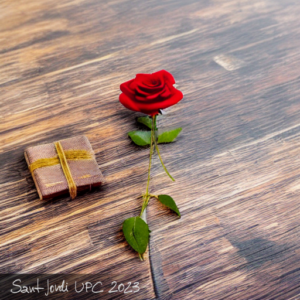UPC Roses. Digital Sant Jordi 2023
- Deep Learning Models, Django, Google Cloud Service, Python, Svelte
Home » Success Stories »
Description
UPC 2023 Roses are constructed from two different inputs: a sketch of a figure and a free-form descriptive text entered by the user. The result is an image with one or more roses that follows the shape of the sketch and tries to reflect the descriptive text.

To generate this image, a deep learning generative model has been used, which consists of a neural network architecture capable of producing an image from a text and a sketch. The model used is ControlNet: a neural network based on the text-to-image model called Stable Diffusion.
Stable Diffusion is an artificial intelligence model designed to create images from text. That is, given an input text, it generates an image that matches the description of this text.
To guide the process of building the image that is generated from the text, ControlNet has been used, a modification of the Stable Diffusion architecture that allows to condition how the image is generated from an initial sketch made by the user. Thus, with ControlNet sketches and outlines are being used to tell Stable Diffusion exactly how you want to condition the composition of the image from the text entered.
The project also allows you to view a gallery of all the roses that have been generated.

This project has been commissioned by the Cabinet of the Rector of the UPC that has organized Sant Jordi Digital 2023 of the UPC, which, together with UPCArts, wanted to create a system to generate virtual roses with Artificial Intelligence.
This system has been developed by inLab FIB with the collaboration of the Communication Service of the UPC and UPCArts.
In 2022, inLab FIB was also in charge of the development of the generation of the UPC Roses. The roses were generated from a description and the style of an artist. https://roses-inlab.fib.upc.edu/2022/


